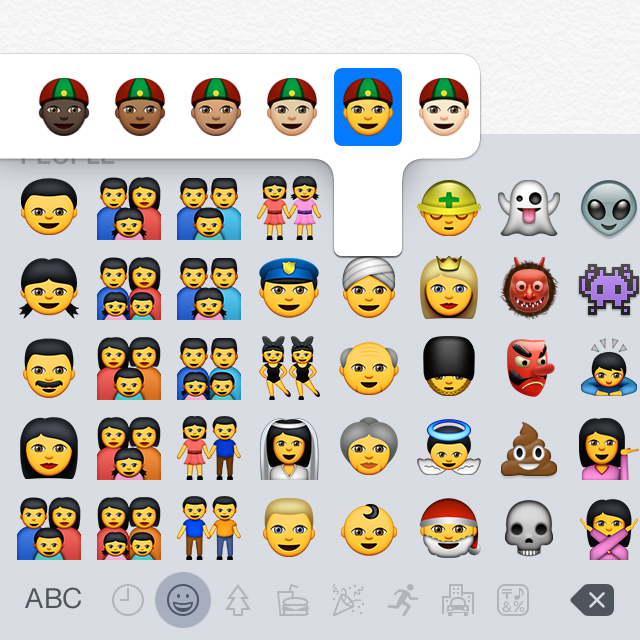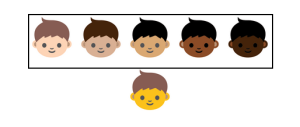
Update (2/23/2015): New beta releases of OS X 10.10.3 and iOS 8.3 have filled in previously empty placeholder icons with new emoji, as seen above. Faces and body parts that were previously light-skinned are now a Simpsons-esque shade of yellow by default, but if you keep your finger on the screen the emoji picker will offer up five different skin tones for you to choose from.
Original story: Photos for OS X is the biggest change introduced in the first beta build of OS X 10.10.3, but the folks at MacRumors have discovered another: preliminary support for better diversity in emoji.
The implementation looks like the one laid out in a Unicode Consortium draft proposal published in November. That proposal calls for a selection of five color swatches, which, when combined with a "base" emoji like a man or woman's face, can change that emoji to display different skin and hair colors. Apple's early implementation is full of blank and placeholder images, but it looks like certain emoji are getting a dropdown menu that will allow users to choose from among several versions of the same basic emoji.
The update also includes other placeholders at the top level that aren't hidden behind drop-down menus—though there's no indication of what these empty spaces represent, the odds are good that Apple is planning to add support for the 250 new emoji added with Unicode 7.0 back in June of 2014.

The conversation about emoji diversity began in earnest last March, when Apple said that it had been "working closely with the Unicode Consortium" to introduce "more diversity in the emoji character set." Like most standards bodies, the consortium moves rather slowly, but the group includes software heavyweights like Apple, Google, Microsoft, and Adobe. That means that within the next few software updates, users of most of the world's major operating system software will be able to see and send these more diverse emoji regardless of the platform they choose to support.
reader comments
147